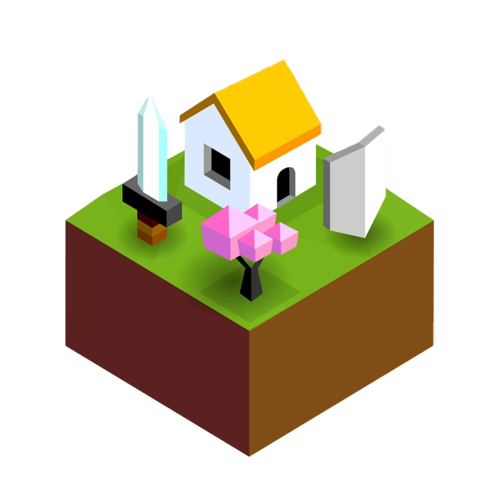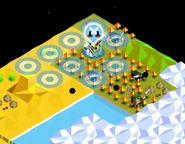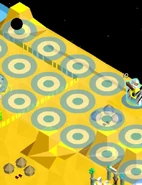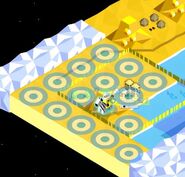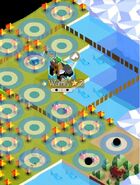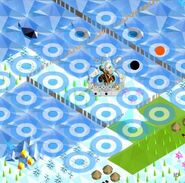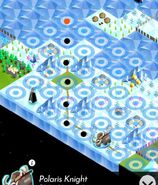The movement of a unit, specifically which locations it can move to on a given turn, is determined by its movement stat, its skills, and the terrain it moves across. A unit may only move once per turn (besides the use of the dash and escape skills).
A unit's movement stat determines how far it can move every turn. Moving from one tile to an adjacent tile incurs a cost of 0.5 if both tiles have roads or 1 otherwise. Units are limited to moves that incur a total cost of less than or equal to 0.5 more than their unit stat turn.
Certain types of terrain, namely forests (without roads) and mountains, block movement.
Normally, a unit can move the same amount of tiles as their Movement stat, irrespective of the tile they start on. However, this is affected by the terrain you move across, the presence of Roads, as well as some other factors.
Each tile can only be occupied by one unit at a time. A forced unit spawn occurs when an unit is spawned on a tile that already has an unit on it.
Once Polaris researches Polarism, their land units (those without the skate skill) gain an extra move when moving onto ice for the first time that turn.
Unit Skills and Movement
The unit skills listed below impact movement in some way. (Units without any of these skills are called “land units”.)
- Carry (Boat, Ship, Battleship): The carry skill allows a unit to carry another unit inside and travel on water. (Navigation or Free Diving must be researched to travel on ocean tiles.) A unit with the carry skill can move to land tiles adjacent to water, but doing so turns it into the unit it was carrying and ends the unit's turn.
- Swim (Amphibian, Tridention, Crab): The swim skill allows a unit to freely travel between water and land but doubles the movement cost of land tiles without roads.
- Fly (Baby and Fire Dragon): The fly skill allows a unit to ignore all movement barriers imposed by terrain and explore a 5x5 area (like the scout skill). However, units with the fly skill cannot utilize roads.
- Navigate (Navalon): The navigate skill allows a unit to move across shallow water and ocean even if the prerequisite technologies are not researched. Units with the navigate skill cannot move to land tiles, except they can capture cities (but not villages).
- Skate (Mooni, Battle Sled, Ice Fortress): The skate skill doubles movement on ice but limits movement to one and bars units with it from using the dash and escape skills on land.
Terrain
Field and Ice tiles have a movement cost of 1 (i.e. A unit with 2 movement such as a Rider can move across 2 field tiles), however Forest and Mountain tiles completely block movement. A unit will never be able to cross over Mountain or Forest tiles without roads, even if they had excess movement points.
Shallow water and Ocean tiles have a movement cost of 1.
Units cannot move into unexplored fog of war (Cloud tiles), even if they had excess movement points.
Buildings
Most land units moving into a port will be turned into Boats and will be unable to perform actions for the rest of that turn, even if they had excess movement points or had not attacked. However, units with the Swim or Fly skills are not affected.
Zone of Control
All units exert a passive Zone of Control onto enemy units. This takes priority over movement bonuses conferred by Roads or Polarism. This means:
- A unit not starting adjacent to an enemy unit can move into a tile adjacent to an enemy, but no farther, even if they had excess movement points.
- A unit starting adjacent to an enemy unit can move to another enemy-adjacent tile, but it will lose all movement points. It may also move away to tiles not adjacent to an enemy, suffering no penalties.
This does not prevent units with the Dash skill from attacking after moving, and the Zone of Control goes away when the enemy unit is destroyed.
Units with higher movement stats may be able to move out and then back into Zone of Control, occasionally leading to seemingly impossible but valid movement destinations.
Roads
Movement between two tiles with Roads (or a Road and a city) requires only 0.5 moves, ignoring the movement penalty from Forests (it is impossible to place Roads on Mountains) but not Zone of Control. This applies only to Roads in your territory or in neutral territory, but not when moving onto Roads in enemy territory.
In order to utilize bonus movement from roads, you need to place a road where your troop is standing and then on the following tile. City tile works as a road tile.
When calculating movement cost of a tile, the game rounds up - meaning even if you have 0.5 movement points remaining, you can still move onto a tile costing 1 or more movement points. place the unit ends up is irrelevant - you don't need a road at the final tile and movement is not blocked if final tile is an obstacle.
Forced Unit Spawns
A forced unit spawn occurs when an unit is spawned on a tile that already has an unit on it, resulting in the original unit being displaced in a specific, ascertainable direction. This can happen when a super unit is spawned in a city, a Ruin provides a unit as a reward, or when ∑∫ỹriȱŋ uses enchantment to create a Polytaur or Navalon.
Forced unit spawns are notably used to push out an enemy unit attempting to capture a city by upgrading the city to spawn a super unit.
Push Order
The push order for forced unit spawns determines the direction in which the unit already on the tile where the new unit is spawned will be pushed. With the Moonrise update, push order was changed to the following:
- Friendly units that previously moved will be pushed in the same direction of their movement; for example, a unit that previously moved north will be pushed north.
- Enemy units that previously moved will be pushed in the opposite direction of their movement; for example, an enemy that previously moved north will be pushed south.
- If a unit was not previously moved, it will be pushed toward the center of the map.
Deleting Units
If a unit is spawned to displace another unit, and there is nowhere for the displaced unit to go (i.e. all adjacent tiles are either impassable or occupied by more units), the displaced unit will instead be removed from the game entirely. This does not count as a kill for the Gate of Power, nor does it count as an attack for the Altar of Peace. This can be useful if you have no way to kill units sieging your cities, or do not have enough attacks to do so. Deleting an enemy giant can be especially damaging, since giants are not renewable.
Examples
Terrain and Zone of Control
Roads
Polarism
Movement Guides
- QuasiStellar’s "Movement in Polytopia"
- Glouc3stershire’s movement guide
